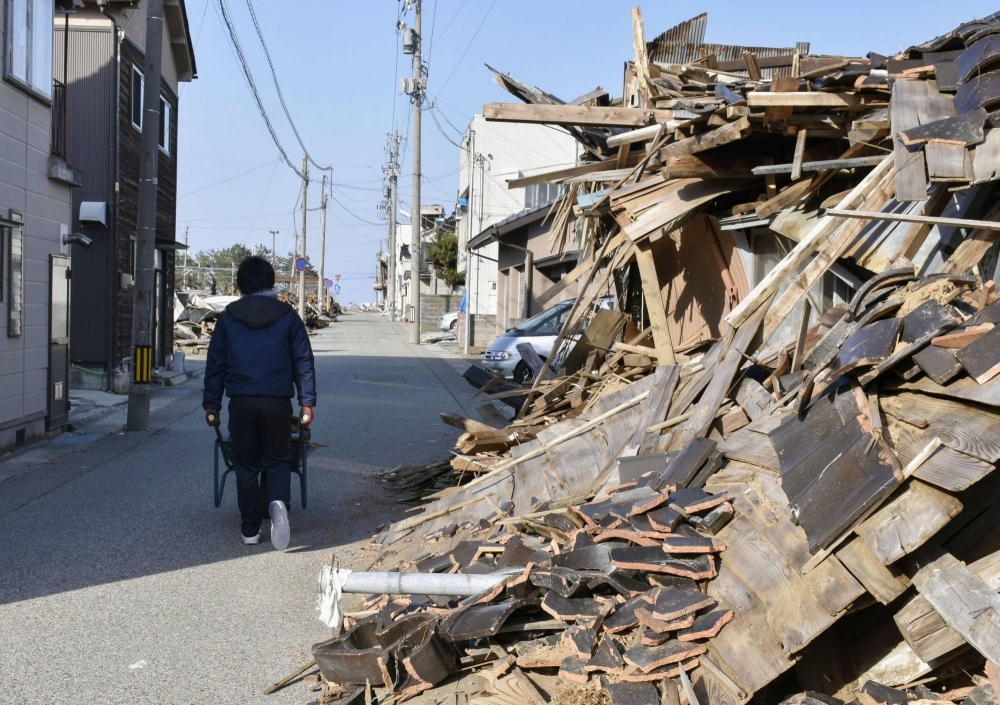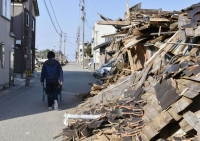Roughly 30% of the populations in the cities of Wajima and Suzu, Ishikawa Prefecture, have yet to return to their hometowns following the substantial damage caused by the Noto Peninsula earthquake, a survey showed Monday.
According to the survey by Agoop, a Softbank-affiliated information service company, over 9,000 residents remain evacuated outside of the two cities as of March 1, two months after the Jan. 1 quake.
Utilizing anonymized phone location data, analysts estimated population shifts from Dec. 31 — the day before the quake — to March 1. Data extracted at 11:00 p.m., when daily movements subside, was used to estimate the number of people in the two cities to compare with official population figures provided by the municipalities.
According to the analysis, in Wajima, with an official population figure of 22,000, the estimated population on March 1 was approximately 16,000, indicating nearly 30%, or about 6,000 individuals, had evacuated to outside the city. The number of people in Wajima on Dec. 31 was around 20,000, but it fell to 18,000 on Jan. 1. As of Feb. 1, the estimated population was 13,000, reflecting a 40% evacuation rate.
Similarly, in Suzu, with a population of 12,000, approximately 8,100 individuals remained in the city as of March 1, suggesting a 30% evacuation rate. The population on Dec. 31 was roughly 12,000, which dropped to around 11,000 on Jan. 1, and further declined to about 7,800 by Feb. 1.
Despite ongoing infrastructure restoration efforts, a significant number of residents in both cities have yet to return home, the survey revealed.
In Noto, with a population of 14,000, an estimated 2,000 individuals, or about 15% of the town’s population, had not returned by March 1.
Similarly, in Nanao, with a population of 47,000, an estimated 6,000 individuals remained displaced, according to the analysis.






